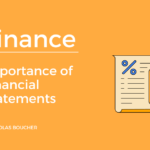Do you know how important Working Capital Requirement (WCR) is for financial management?
As a finance professional, you’re probably familiar with P&L KPIs and other financial metrics.
However, if you want a complete overview of your financials, you also need to understand how to analyze a balance sheet.
One important component of a balance sheet is the working capital requirement (WCR).
Today, we’ll explore what WCR is, why it’s important, and how it can impact your cash flow.
Table of Contents
What Is Working Capital Requirement?
Working capital requirement (WCR) is the amount of capital that a company needs to finance its day-to-day operations.
It includes the money tied up in inventory, accounts receivable, and accounts payable.
Essentially, WCR is the capital that a company needs to fund its operations until it receives payment from its customers.
Why Is WCR Important?
Here are 5 reasons why analyzing WCR is important:
#1: Link to Cash
Changes in WCR have a direct impact on your cash balance.
When WCR goes up, cash goes down. When WCR goes down, cash goes up. Therefore, understanding this link can help you manage your cash flow more effectively.
#2: Identify Old Items
Analyzing WCR allows you to identify old receivable balances and increasing stock balances. Furthemore, by reviewing these balances in a timely manner, you can prevent unexpected depreciation of old items.
#3: Financing Needs
WCR is a good indicator of financing needs for growing companies.
By tracking your WCR and comparing it to your growth, you can plan your WCR based on your growth forecasts and secure the required financing.
#4: Supply Chain Impact
Identify the impact of your supply chain plan on your cash.
Reviewing your inventory levels informs you of the effect of supply chain decisions on your cash.
Moreover, by aligning priorities such as client delivery, lead time, and financing capabilities, you can optimize your supply chain and improve your cash flow.
#5: Payment Terms
Your clients and suppliers’ payment terms will directly impact your receivables and payables balances.
Paying your suppliers too early and allowing long payment terms to your clients will limit your cash position.
By managing your payment terms well, you can be less dependent on external financing.
Bonus/Last Tips
- Monitor your WCR regularly to identify changes that can impact your cash flow.
- Consider using software or tools to track your WCR and improve your financial management.
- Work with your suppliers and customers to negotiate payment terms that are favorable for your business.
Conclusion – Use WCR in Your Advantage for Financial Management
Analyzing WCR is a critical component of financial management for businesses of all sizes.
By understanding the link between WCR and cash, identifying old items, tracking financing needs, managing your supply chain, and optimizing payment terms, you can improve your cash flow and ensure the long-term success of your business.
Also, by regularly monitoring your WCR and using software or tools to track it, you can stay on top of changes and make informed financial decisions that support the growth and sustainability of your business.
Finally, do you find the obstacle in your career you are facing frustrating? Then, you are in the right place! Start learning today and fulfill your potential with this unique finance course! Additionally, make sure to check out my Twitter account to expand your financial knowledge.
Key Takeaways
- Analyzing WCR is critical for effective financial management.
- Changes in WCR have a direct impact on your cash balance, so it’s important to understand this link.
- Regularly reviewing WCR can help you identify old items and optimize your supply chain.
- Tracking WCR can help you plan your financing needs and secure the required financing.
- Negotiating favorable payment terms with your suppliers and customers can improve your cash flow.
FAQ
1. What is Working Capital Requirement (WCR)?
- Working Capital Requirement (WCR) refers to the capital needed to support a company’s daily operations, encompassing funds tied in inventory, accounts receivable, and accounts payable until customer payments are received.
2. Why is analyzing WCR important?
- Analyzing WCR is vital due to its direct link to cash balance fluctuations. It aids in managing cash flow, identifying aged receivables and excess inventory, and planning financing needs.
3. How does WCR relate to financing needs for growing companies?
- WCR serves as a reliable indicator of financing requirements for expanding companies. By comparing WCR with growth forecasts, companies can align financing needs with growth projections.
4. How does WCR impact supply chain management?
- Analyzing WCR helps assess the effect of supply chain decisions on cash flow. It aids in optimizing supply chain operations by considering factors such as client delivery, lead time, and financing capabilities.
5. What are the benefits of negotiating favorable payment terms?
- Negotiating favorable payment terms with clients and suppliers directly influences cash flow. Optimizing payment terms can enhance cash position and reduce reliance on external financing sources.











